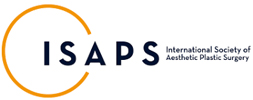Table of Contents
There are many different reasons for having breast reconstructive surgery.
Breast asymmetry can be the result of an accident, burns or, in many cases, breast cancer. In most cases, the diagnosis and subsequent therapy in the acute phase of breast cancer is carried out in one of the large hospitals. Here, the targeted diagnostics for staging and subsequent therapies can be carried out very well. (In oncology, staging is the part of diagnostics that serves to determine the degree of spread of a malignant tumour). Often, chemotherapy and/or radiotherapy is necessary along with the operation. After this period of acute illness, questions about breast reconstruction usually arise afterwards. The very first question is the current, post-operative condition of the affected breast.
In most cases, a subtotal mastectomy (in the case of a subcutaneous mastectomy, the breast tissue is removed through an incision in the crease of the lower breast) was performed beforehand. The skin of the breast and the nipple remain intact. In these cases, what remains is mainly a massive volume deficit, sometimes also a dislocation. In addition, there is often damage to the tissue caused by radiation therapy. In these cases, it is usually possible to find a very satisfactory, restorative surgical solution in comparison with the opposite side. A frequent combination option is to choose a breast lift of the healthy side and an augmentation of the previously diseased side. Sometimes a bilateral augmentation with a breast lift is preferred, depending on the individual wishes of the patient.
Breast reconstruction in Munich
In debn operations in which the nipple-areola complex (the combination of the nipple and the surrounding areola) had to be surgically removed in the course of the cancer, this extended operation and therapy option is recommended as a follow-up: in many cases, the choice of an augmentation of the diseased side with a size adjustment to the opposite side is considered the first choice of therapy. In a second step, after a few months, one can then begin with nipple reconstruction on the one hand and adjust the size of the opposite side on the other.
In the more than 20 years of tumour after-care, it has been seen more and more frequently that after a breast reconstruction with autologous tissue – which is often unavoidable in acute cases – there is a clear dislocation and often a difference in volume. In primary surgery for the disease, tissue replacement with a latissimus dorsi muscle plasty or a similar pedicled or free muscle graft is very often performed as a breast replacement. This very beautiful possibility of breast shaping has only one decisive disadvantage. The transplanted muscle gradually loses volume in its new position and changes its consistency as a breast substitute. This natural process has a decisive effect on the appearance of the diseased breast. Special implants have been developed by German manufacturers for exactly this purpose; they offer a number of advantages in reconstructive surgery. Very often, with a great deal of experience and targeted augmentation, we can restore your breast shape very naturally. In the follow-up, breast augmentation to the opposite side can of course also be performed.
All in all, the earlier discourse in medicine about whether reconstruction should be carried out with autologous tissue or allogeneic material, i.e. material from outside the body, has now become obsolete, as experience has shown that the combination of both options is usually the ideal solution for the patient. Of course, this must be carefully examined in an individual consultation in order to be able to coordinate the choice of surgical method exactly with the patient’s wishes.
Please feel free to make an appointment for a personal consultation about all the possibilities of our therapy offers.



